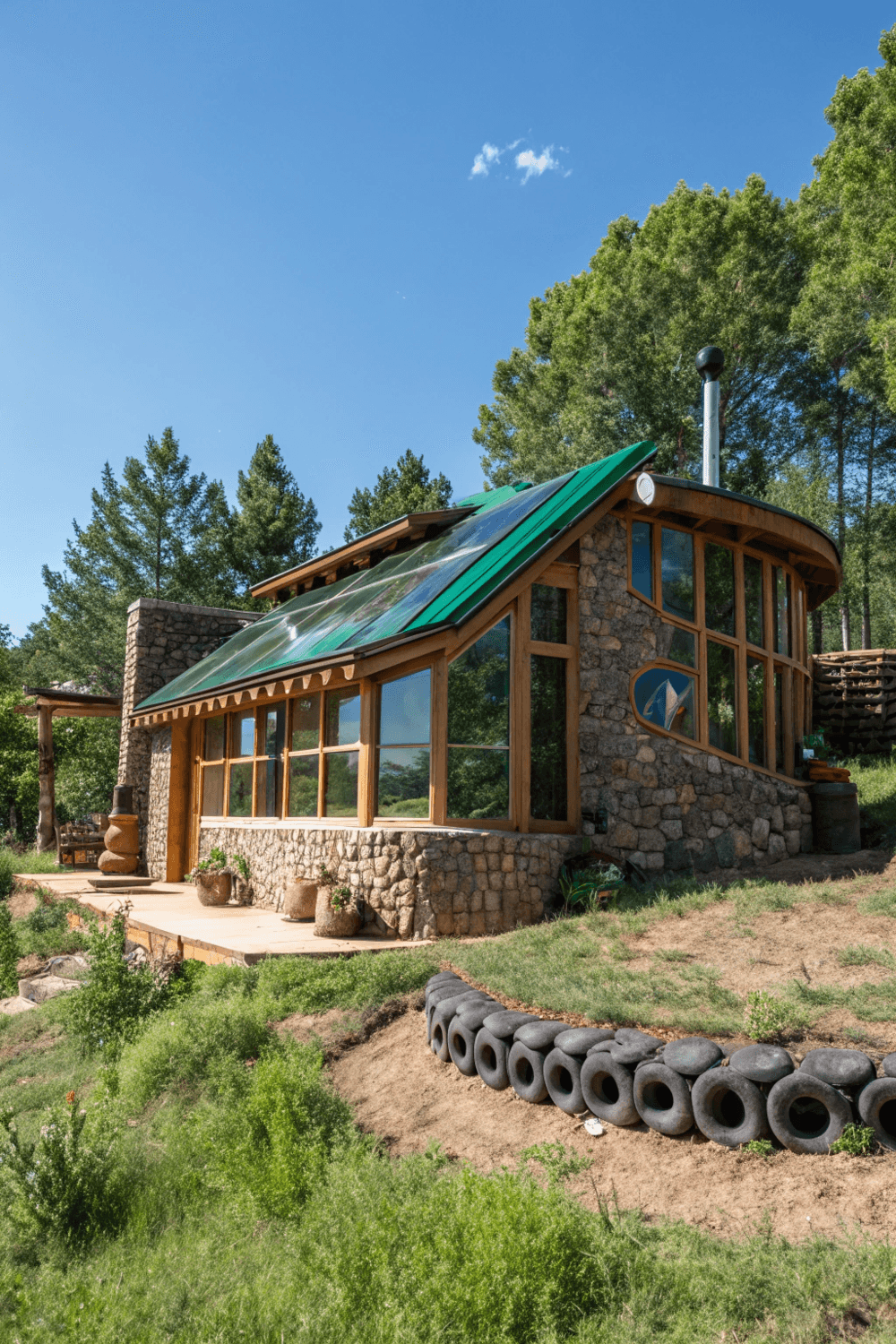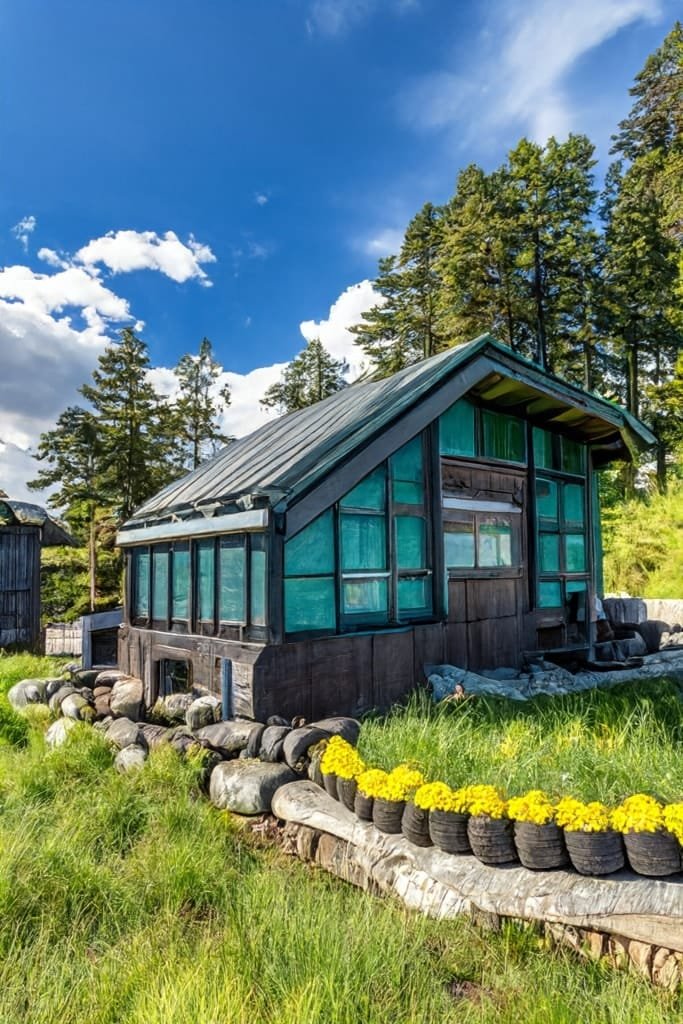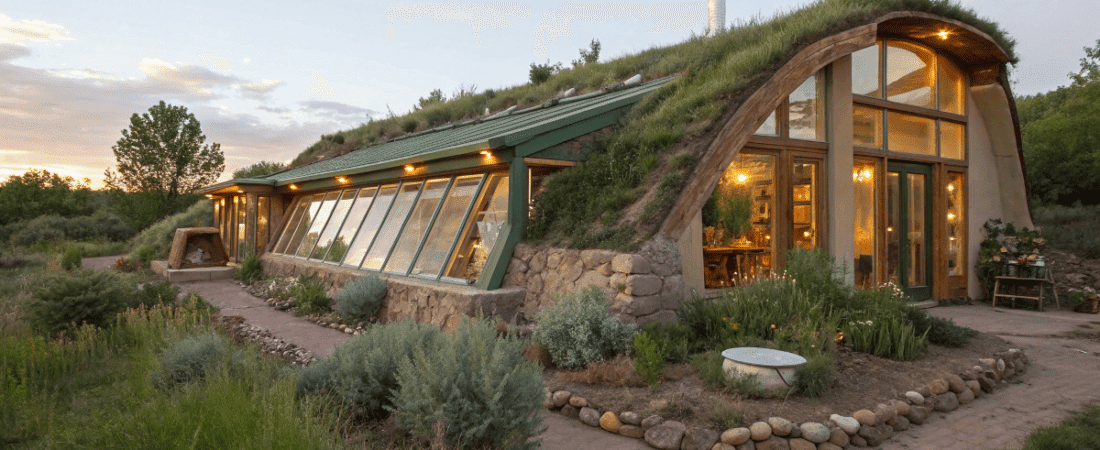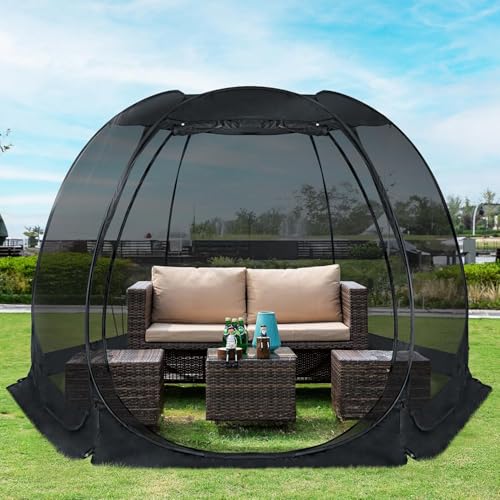Can a home be both beautiful and eco-friendly? With an Earthship tiny home, the answer is a resounding yes. The earthship design incorporates unique architectural features and sustainable materials to reduce environmental impact while promoting self-sufficient living, captivating eco-conscious homeowners, sustainable living enthusiasts, and architecture fans alike.
If you’re curious about how Earthship homes work, why they’re special, and whether building one is right for you, you’ve come to the right place. Read on to explore how these off-the-grid houses are breaking the mold by combining thoughtful design, natural materials, and green energy systems.
What is an Earthship?
An Earthship house is a sustainable home designed to operate independently of public utilities. Combining passive solar strategies, modern green energy, and natural materials, an Earthship does more than offer a roof over your head—it transforms the way you live.
The concept of Earthship homes was pioneered by architect Michael Reynolds in the 1970s. He was inspired to tackle two common global challenges: excessive waste and affordable housing shortages. The result? An eco-friendly design that incorporates recycled materials like old tires and glass bottles while enabling homes to produce their own water, electricity, and even food.
Various earthship designs showcase innovative architectural practices focused on sustainability. These designs utilize natural materials and energy-efficient technology, featuring distinct elements like the integration of glass for natural lighting and unique construction techniques pioneered by Michael Reynolds.
Efficient, effective, and built to last, Earthship architecture shows how modern living and environmental stewardship can coexist.

Definition and Origin of Earthship Homes
Earthship homes are a revolutionary form of sustainable architecture that emerged in the 1970s, thanks to the visionary work of architect Michael Reynolds. These homes are designed to be self-sufficient, producing their own electricity, collecting their own water, and even growing their own food. The core idea behind Earthship homes is to minimize environmental impact by using natural and recycled materials, such as tires, cans, and bottles, in their construction. By working in harmony with the surrounding environment, Earthship homes offer a unique blend of eco-friendliness and modern living.
Examples of Earthship Homes Around the World
Earthship homes have made their mark across the globe, showcasing their adaptability to various climates and environments. One of the most notable examples is the Earthship Community in Taos, New Mexico. This community features over 70 Earthship homes and serves as a living model of sustainable living. Another impressive example is the Earthship House in Brighton, England. Built using reclaimed materials, this home boasts a unique, curved design that stands out while maintaining its eco-friendly credentials. These examples highlight the versatility of Earthship homes and their potential to thrive in diverse settings.
Benefits of Living in an Earthship
What makes an Earthship so revolutionary? Here are a few key benefits to consider if you’re looking to live sustainably.
Go Green: Earthship homes significantly reduce your carbon footprint by maximizing energy efficiency and using recyclables for construction.
Self-Sufficiency: With Earthships, you can generate your own power, collect water, and grow your food. Enjoy newfound freedom from municipal services.
Save Money: While upfront costs can be high, most owners save substantial money on energy, water, and food over the long haul. Think of it as an investment in your wallet and the planet.
Healthier Living: From cleaner energy to toxin-free building materials, living in an Earthship enriches your health while improving air and water quality.

Earthship Construction
Using Natural and Recycled Materials in Earthship Building
Creating an Earthship home starts with selecting materials that harmonize with the environment. These include a mix of natural and reused components, such as:
Recycled tires filled with compacted earth to form sturdy walls.
Glass bottles and aluminum cans that create mosaics and block infill walls.
Natural elements like adobe, wood, and straw bales to reinforce the framework.
The idea? Turn trash into something functional and beautiful.
Earthship Building Techniques and Methods
Earthship building focuses on working with, rather than against, environmental forces. Key techniques include:
Thermal Mass: Thick walls made from earth-filled tires help regulate temperatures year-round.
Passive Solar Heating: Wide, south-facing windows allow sunlight to warm the interior throughout the day.
Natural Ventilation: Cleverly positioned vents ensure airflow without the need for energy-intensive HVAC systems.
This harmonious relationship between design and nature makes Earthship homes incredibly energy-efficient.
Importance of Passive Solar Design in Earthships
Passive solar design is a cornerstone of Earthship homes, enabling them to harness natural light and heat from the sun. This is achieved through large, south-facing windows that capture sunlight and warm the interior. The thermal mass of the Earthship’s walls and floors plays a crucial role in absorbing and storing this heat, which helps maintain a comfortable temperature throughout the year. By incorporating passive solar design, Earthship homes reduce the need for artificial heating and cooling, significantly cutting down on fossil fuel consumption and utility bills.
DIY Earthship Construction vs. Hiring a Professional
Building an Earthship? You have two options.
DIY Build: If you’re a seasoned DIY enthusiast, you can purchase plans and materials to create your Earthship. It’s cost-effective but requires significant effort and skill.
Hire a Pro: For those lacking time or expertise, hiring professionals like Earthship Biotecture or partnering with experienced earthship builders ensures your dream home is built right from day one.
Either way, meticulous planning is required before you begin digging foundations.
Designing Your Earthship Home
Floor Plans and Interior Design Ideas
Earthship houses come in all shapes and sizes. Floor plan options include everything from cozy one-bedrooms to roomy three-bedroom layouts. When designing your home, consider daily living requirements, storage solutions, and multifunctional spaces.
For interiors, capitalize on natural light with large windows. Incorporate earthy elements like stone floors and reclaimed timber for cozy and sustainable decor. And don’t forget to include functional storage options to keep your space organized.
Exterior Design Options
On the outside, Earthship homes are as breathtaking as they are sustainable. Materials like adobe and natural stone walls boost curb appeal while preserving eco-credentials. Don’t shy away from incorporating vertical gardens or solar-powered water fountains for form and function.
Incorporating Renewable Energy Systems
At their core, Earthships are designed to run on renewable energy, making fossil fuels nearly obsolete. Solutions include solar panels, wind turbines, and even hydro-electric generators. To cut down energy usage further, install energy-efficient appliances and LED lights. Every eco-conscious choice adds up.
Organic Food Production and Greenhouse Design
A key feature of many Earthship homes is the inclusion of greenhouses or indoor gardens, which provide a sustainable source of fresh produce. These greenhouses are designed to maximize natural light and heat, creating an optimal environment for plant growth. Techniques such as hydroponics and permaculture are often employed to enhance food production efficiency and minimize waste. By integrating organic food production into their design, Earthship homes offer a healthy and sustainable source of nutrition for their occupants, further promoting a self-sufficient lifestyle.
Sustainability Features
Energy Efficiency and Renewable Energy Sources
Earthship homes are all about energy autonomy. Solar panels and wind energy power everything from kitchen appliances to heating systems, while thermal mass technology keeps rooms comfortable year-round without added energy input.
Waste Management and Recycling Systems
Everything within an Earthship has a purpose. Water, for instance, is used twice. First for drinking and washing. Then, greywater irrigates plants before being filtered and used again in toilets. This closed-loop system dramatically reduces waste.
Earthship homes also prioritize composting. Food scraps return to the soil, leaving fewer items destined for landfills.
Water Collection and Conservation
Rainwater and snowmelt are captured through Earthship rooftops, channeled into barrel cisterns for storage, and purified for safe drinking. Low-flow plumbing fixtures ensure conservation, while solar-powered water heaters deliver comfort without excessive energy use.
Building and Maintenance
Obtaining Necessary Permits and Approvals
Before you start building, check local zoning laws and construction regulations. Some codes might restrict off-the-grid building techniques. Consult Earthship Biotecture or similar experts for guidance on getting the necessary approvals.
Understanding Local Regulations and Zoning Laws
Before embarking on the journey of building an Earthship home, it’s crucial to understand and navigate local regulations and zoning laws. Earthship homes often deviate from traditional building codes, which may necessitate special permits or variances. Thorough research and compliance with local regulations are essential to avoid costly delays or fines. Additionally, Earthship homeowners should be aware of any restrictions on water collection, greywater reuse, or renewable energy systems. By understanding and adhering to local regulations, Earthship homeowners can ensure a smooth and successful building process, paving the way for a sustainable lifestyle.
Regular Maintenance Tasks
Like any home, Earthships require care. Create a maintenance schedule that includes tasks like:
Cleaning solar panels for peak efficiency.
Checking water filtration systems regularly.
Inspecting walls for signs of cracks or wear.
A little routine upkeep goes a long way in preserving your home’s sustainability features.
Costs and Financing
Estimated Building Costs
The price of an Earthship house varies widely based on size and materials. A small DIY Earthship might cost $10,000, while a spacious custom design could reach $1 million. Generally, expect to pay $150–$225 per square foot.
Financing Options
Don’t have the funds saved? Some banks now offer loans specifically for green homes. Grants for sustainable construction are also available in certain regions, so explore your options to make financing easier.
Cost Savings and Long-Term Benefits
The upfront investment pays off in spades. Earthships reduce or eliminate utility bills while their resilience to climate change can boost resale value.
Earthship Community and Lifestyle
Benefits of Living in an Earthship Community
Earthship communities are the ultimate hubs for sustainable living. They provide like-minded neighbors to share resources, ideas, and tips, fostering deep connections. Plus, their communal approach can make maintenance tasks and costs more manageable.
Tips for Building a Sustainable Lifestyle
Living sustainably doesn’t stop at owning an Earthship. Continue your green ethos by minimizing waste, using public transport, and supporting local farmers. Share advice and learn from fellow Earthship dwellers through online forums or weekend potlucks.
Where to Learn More
Begin your Earthship-building adventure with these reliable resources.
Books: Read “Earthship: Evolution Beyond Economics” by Michael Reynolds for an in-depth guide.
Online Communities: Check out forums on Earthship Biotecture’s site or Facebook groups dedicated to eco-friendly living.
Workshops: Attend hands-on seminars by Earthship Biotecture to learn about design and construction first-hand.
Start Your Earthship Journey
An Earthship house is more than a home. It’s a lifestyle—a commitment to stewardship, eco-consciousness, and independence. Whether you’re ready to build your own or want to simply learn more, these homes are setting a new standard for sustainable living.
Want to create your own slice of sustainable paradise? Explore Earthship plans and resources to start your path toward off-the-grid living today.




